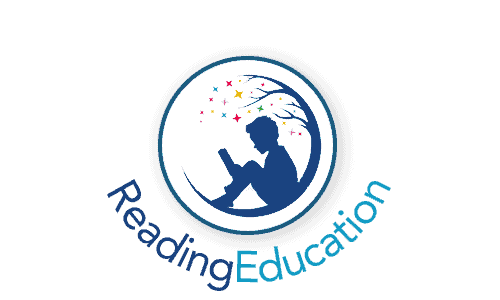As you’ll no doubt be aware, academic success is centred around literacy. Building robust reading skills is absolutely essential for your child to truly blossom; therefore, if your child is struggling or falling behind, it’s vital to identify the issue and facilitate their development to bring them up to speed. To help you do this, we’ve compiled this list of strategies, activities, and tips that you can implement into every learning. But before you begin, it’s crucial to remember that regardless of your child’s age or current reading ability, all children develop at different rates and some just take a little longer than others to bloom – so don’t worry!
Kindergarten to Third Grade (Ages 5 to 9)
There is absolutely no question that learning between the ages of five and nine has a profound impact on a child’s development. At this stage of learning, a child will grasp many facets of reading, including the ability to decode letter sounds, blend sounds to form words, recognise letters, build an ever-expanding memory of spelling, expand their vocabulary, and establish a substantial bank of sight words. If you want to help grow your child’s reading development repertoire, consider using the follows approaches:
1) Mystery Word Decoding: When reading aloud to your child, miss out one frequently used word, i.e. a word that appears regularly in the text, excluding basic words such as the, they, at, and, them, he, she etc.; this word is the “mystery word”. Give your child clues about the word, such as how many letters it has, a letter (or two) that it contains, or potentially even a specific sound within the word itself if you’re feeling extra generous! Ask your child to try and figure out what the word is. When your child solves the puzzle and deciphers the “mystery word”, remember to celebrate – perhaps even ask your child to clap each time the word is read out. This is by far and away one of the most fun and enjoyable ways to introduce new commonly-used words to your little one.
2) Personalisation: Storytime shouldn’t just centre around books you’ve bought or borrowed; it should include your child’s very own stories too. To use this method to its full, ask your child to narrate a story and as they’re telling their tale, write it down. Then, once they’ve finished, read it aloud together. In the world of education, this is often referred to as “Write a story to read a story”. If your child is struggling to create a story, ask them to think about books they’ve read and the characters, places, and storylines they’ve come across.
3) Silly Sentences: Being creative is an excellent way to further reading and literacy development; therefore, asking your child to create silly sentences can be an effective tool for furthering their reading comprehension and expanding their vocabulary. For example, you could ask your child to think of words that end in ‘LE’, using less common consonants such as K, J, G, and Z. Don’t worry if they make mistakes; making errors is part of the learning process. Correct them, but do so in an encouraging tone, helping them to understand the mistakes made and how to correct themselves.

Third Grade and Beyond (Ages 9+)
At this stage of schooling and development, reading comprehension is absolutely critical. By the time third grade (and beyond) comes around, children are not just learning to read; they’re reading to earn. Teachers will ask students to collate information from various sources and summarise it in their workbooks. The focus of learning is primarily centred around both reading and writing – particularly the ability to revise their own work. If they’re struggling to do this, it’s essential to address the issue as soon as possible. Here are a few examples of how to do so:
1) Context is Vital: If your child is tackling a new piece of text, assist by furnishing them with background knowledge and as much context as you possibly can. For example, if they’re about to begin reading a book about World War Two, talk to them about how the world and your specific country was at that point in history. Doing so will really help to ground children for the reading to come.
2) Essential Words: Alongside proving your child with context, also discuss essential words they’re likely to encounter when studying the text – using images or photos to illustrate meaning if appropriate. For example, if your child is reading a book about the Rainforest, you might wish to discuss with them words such as “amphibian” and “reptile”. If your child is able to understand more complex words, not only will their vocabulary broaden, it will also help to boost their reading confidence.
3) Always Ask Questions: Reading books and other learning materials is only half of the equation; remembering what has been read is equally, if not more, important. You can aid your child’s learning and understanding by asking them question after they’ve finished reading. Reciting information will help to boost your child’s understanding of a certain topic, not to mention helping them to acquire the knowledge permanently. If they’re unsure of anything, be on hand to explain it to them.
4) Amplify Reading Time: Now is the time to encourage reading at all times, no matter what time it is or where you are! Whether you’re at home or away from home, ensure your child has access to reading material. Even if they read for an extra 10 minutes per day, that 1,800 minutes extra per school year, which could expose them to up to one million words each year. Don’t have a book to read? They can ready anything around them – Signs, posters, menus etc.
Children of All Ages
1) Freedom of Choice: Allowing your child to choose the majority of the books they read is vitally important. Why? Because children are far less motivated to read if they’re not particularly interested in the subject matter or story in front of them. Therefore, to ensure your child is reading as much as possible, encourage them to make book choices as they’ll always opt for books that excite them. Of course, you need to vet their choices from time to time to ensure they’re not too difficult and are age-appropriate, but on the whole, it’s wise to give your child a relatively free rein on book choices.
2) Replicate The Classroom: When learning to read at school, children will often “partner up”, with one child reading a page of text while the other asks questions at the end of the page – and vice versa. Every time your child finishes reading a page, ask them a question or two about what they’ve read. Exercises like this help to broaden their vocabulary and boost their reading comprehension skills. To further enhance this activity, read alternate pages and encourage your child to ask you questions too.
3) Reading Performance: Often in class, students are asked to read aloud in front of their peers – something that can be replicated at home with all of the family. To get all of the family involved, assign different characters to different family members, and get everyone to take part and act too. It’s not only entertaining, it’ll also help to build confidence and self-esteem. Confidence is a crucial aspect of all forms of learning and development, reading included; therefore, it’s vital to continually foster confidence building throughout the process of learning to read.
How To Increase Reading Level: A Summary
While the advice contained in this piece certainly isn’t exhaustive, it provides you with a solid foundation around which you can base further reading development at home. In addition to the above suggestions, we also advise reading all of our other articles here on Reading Education, as they have been specifically designed to help your little one develop their reading ability in the efficient (and fun!) ways as possible. If you’re at all concerned about the progress your child is making, always speak to their teacher. The combination of parents and teachers working together will always result in the most propitious of learning environments.

